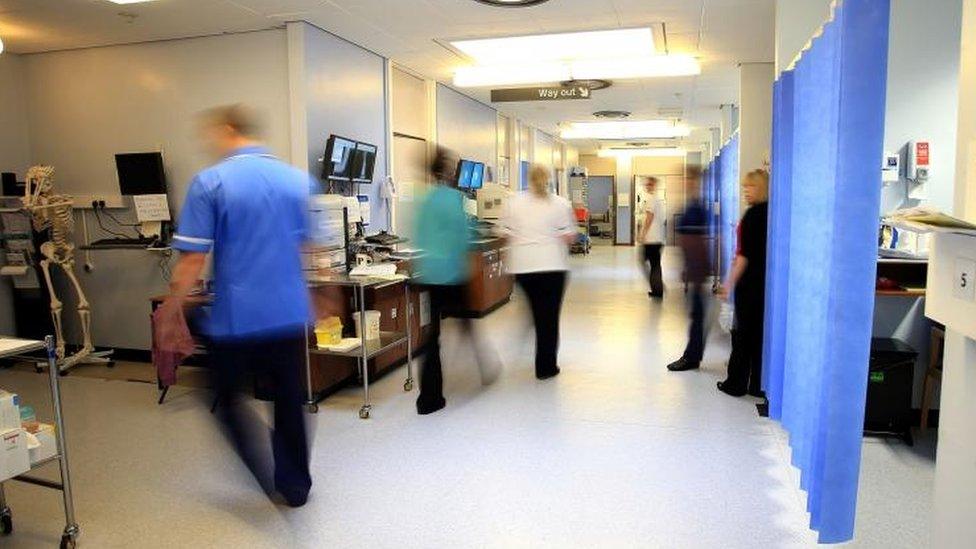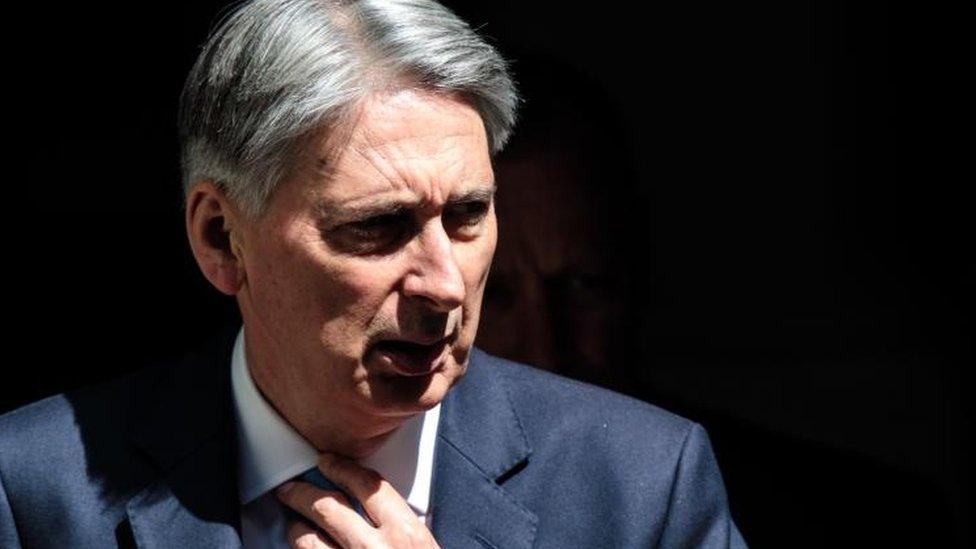Why the Treasury is no fan of a ring-fenced 'NHS tax'
- Published
- comments

It sounds like a simple idea.
If you are going to ask people to pay more tax for a service - make sure it is clear what the tax is for.
In the jargon, it's called hypothecation.
"Ring-fenced" or "earmarked" is probably a simpler way of thinking about it.
Today the debate is about how to raise billions of pounds of extra funding for the NHS.
With an ageing population and increasingly expensive technological innovations, many agree that there needs to be a step change in the budget arrangements for our health care.
The rather tougher question is how to pay for it.
The government could borrow more.
But that could clash with the Conservative's stated aim of bringing the public finances into "balance" - that is, only spending what is raised via taxes and other income, for example on government investments.
Another route is higher levels of tax.
But what type of tax?
Some argue that if it is clear what the money is being raised for, the public would be more sympathetic to it.
"1p for the NHS" was a policy put forward by the Liberal Democrats during the 2017 general election campaign.
The party suggested raising income taxes by 1p on every pound earned, guaranteeing that the money in England would go to the NHS.
More recently there have been suggestions that national insurance contributions, a tax on earnings to pay for benefits and pensions, should be increased and again the money guaranteed for health.
That was the way Gordon Brown "sold" an increase in national insurance contributions in 2002 to the voters.
Shifting priorities
Philip Hammond and his Treasury officials blanch at such proposals.
Firstly, there is the issue of control.
Earmarked taxes make it harder to change spending priorities.
What would the government response be, for example, to an upsurge in crime which demanded more funding for the police if an increase in taxes had already been ring-fenced for health?
Yes, the NHS is important. But so are defence and education and transport, and politicians around the Cabinet table jealously guard their spending fiefdoms.
Secondly, tax revenues can go down as well as up, linking public spending on certain services - in this case health - to the vagaries of economic growth and our earning power.

Has Philip Hammond been handed a hospital pass?
Paul Johnson, the head of the Institute for Fiscal Studies, which was one of the authors of today's report on the need for increased health spending, summed it upped well earlier this year.
"In 2007-08 national insurance contributions brought in £100bn, while we spent £102bn on the NHS," he wrote in an article for The Times., external
"Three years later, after the financial crisis, national insurance contributions were bringing in £96bn while NHS spending had risen to £121bn.
"In a world of hard hypothecation, NHS spending would have been cut or national insurance contribution rates raised during a recession. Either policy would have been crackers."
Such sentiment would gain a hearty "hear hear" from many in the Treasury.
In football and rugby there is a manoeuvre called the "hospital pass".
A player receives the ball just before he or she comes under a heavy tackle.
Theresa May has said she wants to see much more money spent on health care.
And she has just passed the ball to Mr Hammond to sort out how to pay for it.
Borrowing more is one route.
Reforming the service, so the mediocre providers perform as well as the excellent, another.
Increasing taxes a third.
Each raises significant challenges.
Any ideas about ring-fencing tax increases "for health" is a complication many in the Treasury would like to see binned at the earliest opportunity.
- Published24 May 2018

- Published23 May 2018
- Published18 May 2018